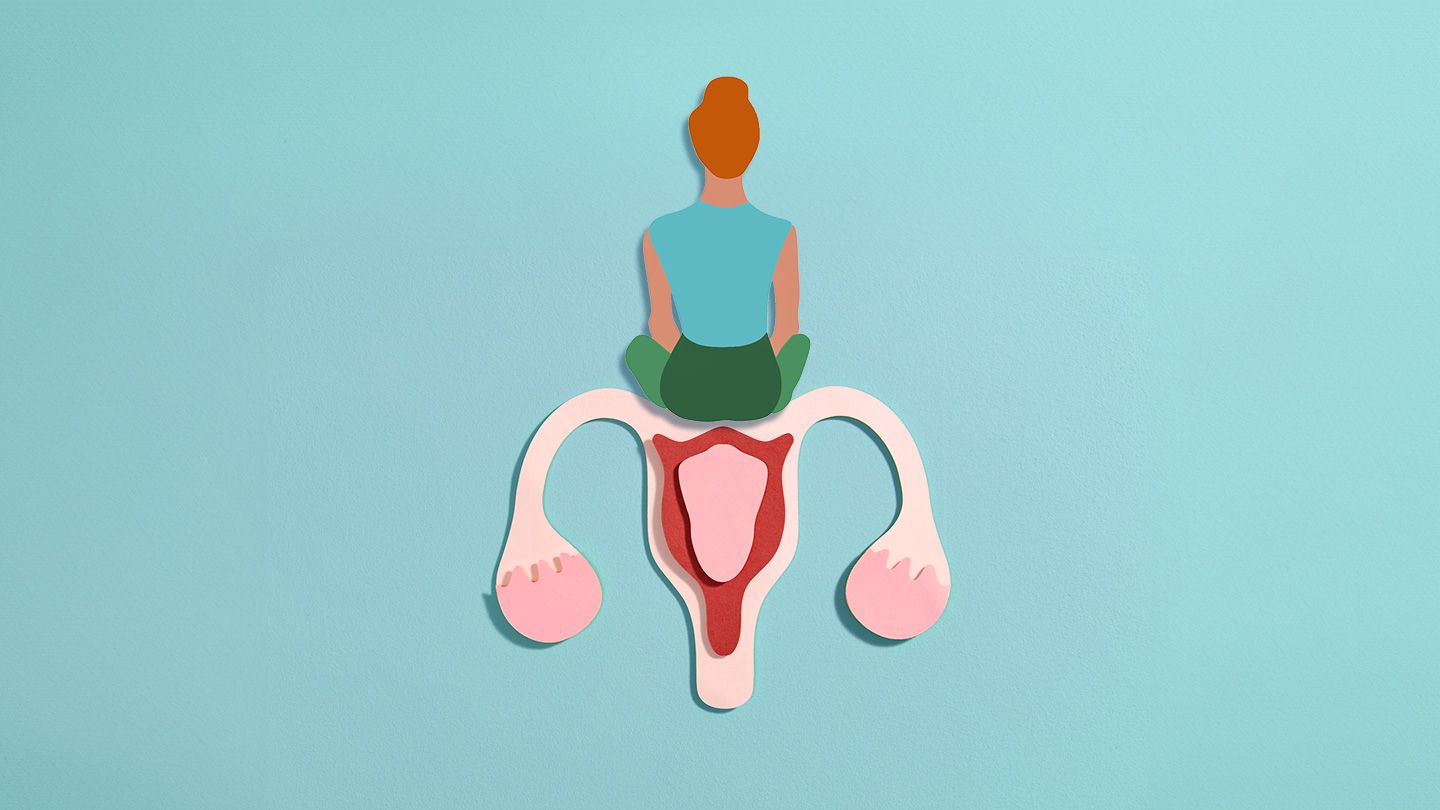A hysterectomy is a surgical operation to remove the uterus, the organ known as the “womb” that is located in the female pelvis. During pregnancy, a fertilized egg implants itself in the lining of the uterus, where the developing fetus is nourished prior to birth. Hysterectomy Is a Permanent, Irreversible Removal of the Uterus After undergoing hysterectomy, a woman cannot become pregnant. Few Hysterectomies Are Done to Treat Cancer or Life-Threatening Conditions Only about 10 percent of the more than 600,000 hysterectomies performed in the United States each year are for cancer treatment and are considered potentially lifesaving. ( 1 ) The rest are essentially elective procedures, and some believe that many of them are unnecessary. How Common Is Hysterectomy or Surgical Removal of the Uterus? After cesarean section , it is the second most frequently performed surgical procedure for women who are of reproductive age in the United States. According to the Centers for Disease Control and Prevention (CDC) approximately 20 million women in the United States have had a hysterectomy. ( 2 ) The majority are performed as a treatment for health conditions when alternate therapies, such as medication, hormone treatments, or less invasive surgical procedures, have been unsuccessful in completely alleviating symptoms such as severe bleeding and pain. When Is Watchful Waiting a Treatment Option For Fibroids? The National Institutes of Health estimate that more than 200,000 hysterectomies are performed each year for fibroids . Because they often cause no symptoms, fibroids are usually detected incidentally during a pelvic exam or a prenatal ultrasound. And treatment is not always warranted. “Uterine fibroids can be completely asymptomatic, causing no problems, or they can cause severe pain, loss of blood, and significantly affect quality of life.” explains Beth Battaglino, RN , CEO of HealthyWomen, a women’s health information and advocacy organization. “The mere presence of fibroids is generally not enough of a reason to have them treated. Your gynecologist should be able to tell if your symptoms are related to your fibroids and whether the symptoms are significant enough to seek treatment,” she adds. Problematic Uterine Fibroids May Resolve With Menopause For some women, fibroids do become problematic, causing heavy bleeding during menstruation. Large fibroids can push on the bladder or rectum or cause abdominal distention. But their growth patterns vary; they may grow slowly, rapidly, or remain the same size. Some may shrink on their own. In most cases fibroids stop growing or shrink once a woman goes through menopause . So even if a woman hasn’t found complete relief from her symptoms after trying medication or undergoing minimally invasive procedures, but she is close to menopause, she may want to wait and see if her symptoms improve before choosing hysterectomy. You Don’t Have to Wait for Menopause to Stop Pain Watchful waiting should be considered an option, not an obligation. “A woman who is miserable from her fibroids, or is experiencing life-threatening bleeding, should not wait until menopause,” says Kate White, MD , assistant professor of obstetrics and gynecology at Boston University in Massachusetts. Alternative Treatments to Hysterectomy: What to Consider There are lots of alternatives to consider before undergoing hysterectomy, an operation to remove the uterus. Options depend on the root problem causing symptoms: Fibroid treatments include hormonal medication, uterine artery embolization, and myomectomy. Endometriosis treatments include oral contraceptives, laparoscopy, and laparotomy. Uterine prolapse can be improved with Kegel exercises or treated with a pessary device. Abnormal uterine bleeding can be treated with a dilatation and curettage (D&C) , progestions , GnRH agonists, oral contraceptive pills, or an IUD. Not Everyone Will Feel Better After Hysterectomy Many women falsely believe that endometriosis can be cured through having a hysterectomy, yet this isn’t true. Endometriosis is a chronic inflammatory disease defined by the presence of tissue similar to that which lines the uterine cavity appears as in other places, such as the lining of the pelvis, fallopian tubes, ovaries, bowel, bladder, or even the lung. If all the endometriosis is not removed at the same time as the removal of your uterus and your ovaries, you may still have endometriosis and its symptoms. Even less invasive procedures aren’t always the solution for symptoms attributed to endometriosis. The only way to determine for sure that you have endometriosis is through a minor surgical procedure called a laparoscopy. Many women with pelvic pain believed to be caused by endometriosis learn that they do not, in fact, have endometriosis after undergoing this diagnostic surgery. Hysterectomy Won’t Cure Endometriosis “Women need to be counseled that surgery and suppression go hand in hand,” says Rebecca Flyckt, MD, assistant professor of surgery at Cleveland Clinic Lerner College of Medicine at Case Western Reserve University in Ohio. “Although every woman is hopeful that this one surgery will “clean it out for good,” and that they will never need another surgery, this is very improbable,” she adds. Urinary Incontinence: A Hysterectomy Risk to Consider “There is definite risk of developing urinary incontinence after a hysterectomy,” says Antonio R. Gargiulo, MD , medical director of the center for robotic surgery at Brigham and Women’s Hospital in Boston. The risk can be as high as 8.5 percent, and is more common in patients who are obese, have had at least one vaginal delivery, and have a large uterus, according to a study published in January 2017 in the American Journal of Obstetrics & Gynecology . ( 3 ) Is Hysterectomy Right For You? Be Your Own Best Advocate Not too long ago, many doctors believed that uterus-sparing treatments couldn’t trump the traditional hysterectomy. But today, many experts are willing to work with women who want to consider alternative therapies instead of the surgical removal of the uterus. Do You Know All Your Options Besides Hysterectomy? There is also evidence that some women may be opting for surgery without fully exploring other options. A study published in March 2015 in the American Journal of Obstetrics & Gynecology found that the majority of women consider at most one alternative treatment prior to hysterectomy. ( 4 ) Furthermore, the study found that nearly 1 in 5 women (18.3 percent) had postsurgical pathologic findings that did not support having undergone a hysterectomy. In other words, some women had surgery that they did not need. Is the Uterus, or Any Human Organ, Useless? What’s more, there is still a misconception that the uterus is merely a reproductive organ and somehow if a you’ve already borne children or decided you don’t plan to in the future, your uterus is somehow “disposable.” Nina Coffey , the president of HERS Foundation, a women’s health advocacy group based in Bala Cynwyd, Pennsylvania, which has counseled women since 1982, stresses that women need more accurate and clear advice about the female anatomy . (HERS stands for Hysterectomy Education Resources and Services.) Understand the Role of Female Organs in Long-Term Health Coffey believes that the number of unwarranted hysterectomies continues to grow in part because, “Women have not been educated about the critically important functions of the female organs and the consequences of their removal.” As she points out, “There is no age or time when the female organs no longer function.” And some question the judgment of removing any healthy organ from a person’s body. If You Opt for Hysterectomy, Choose the Best Surgical Method for You If you do decide to go ahead with a hysterectomy, you should consider which route may be the best choice for you. Many surgeons are more comfortable with doing abdominal hysterectomy, and most are still performed this way. “This is no longer a tenable situation,” says Dr. Gargiulo, who believes that modern medicine has to be patient-centered, not surgeon centered. Choosing Hysterectomy Doesn’t Mean Choosing Abdominal Hysterectomy “Physicians today are often more willing to partner with their patients to help find strategies to treat their disease that meet their individual goals and desires,” adds Dr. Flyckt. Get a Second Opinion if Abdominal Hysterectomy Is the Only Treatment Offered If your surgeon insists on an open abdominal surgery, you should probably get a second opinion. In fact, it is always wise to seek out a second opinion, particularly when you are deciding on a surgery that can’t be reversed.
Read the full article here
Leave a comment




